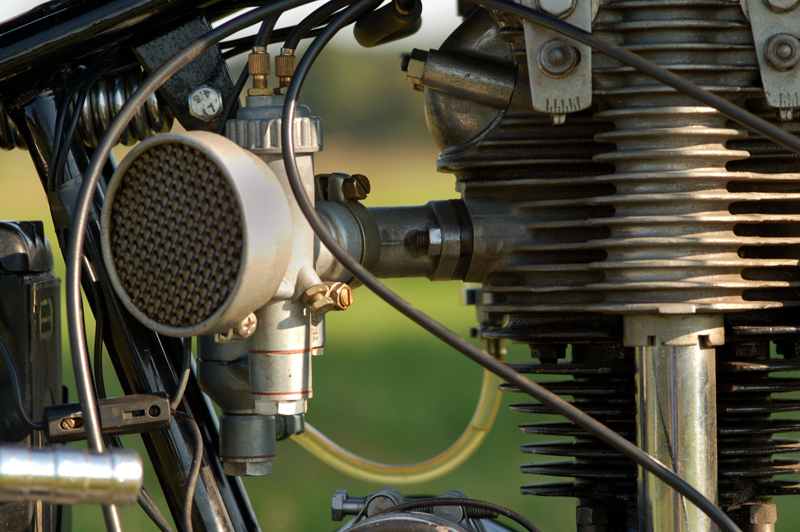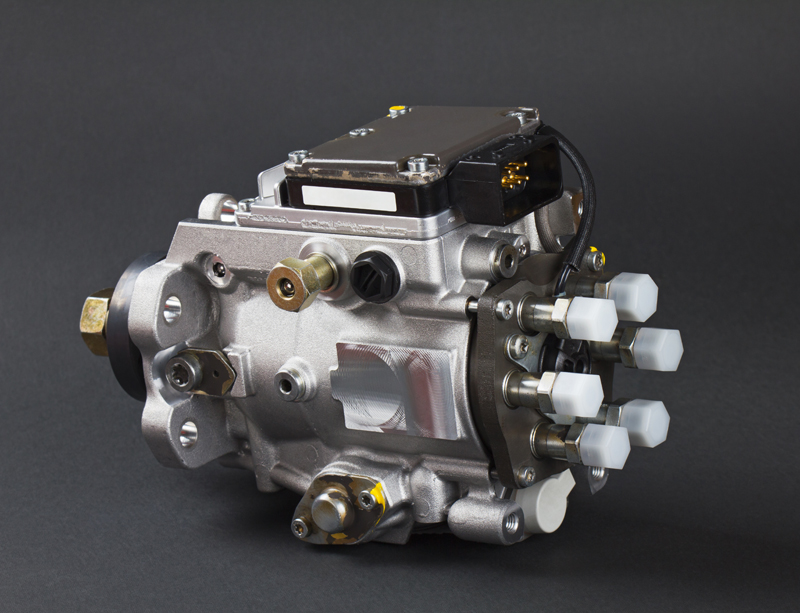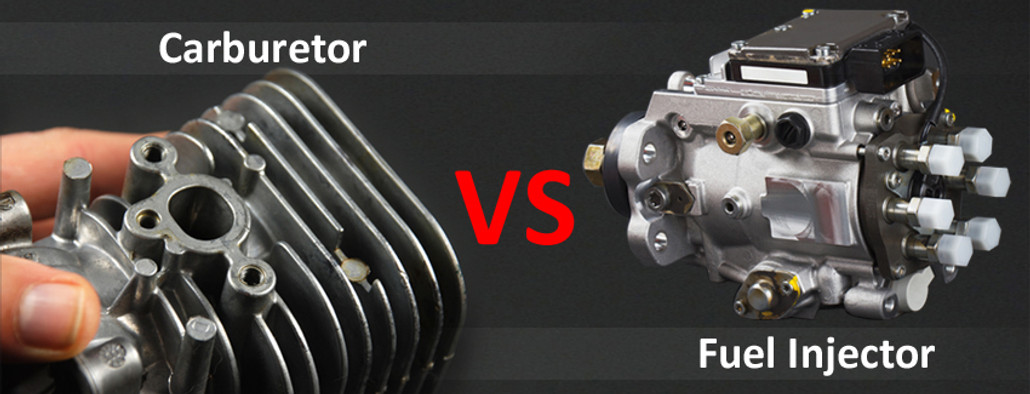Carburetor vs Fuel Injector A look at the two systems
Posted by Ben Baker on Dec 29th 2016
| The debate between carburetor and fuel injection is one that’s never settled and likely never will be settled as long as the internal combustion engine exists. |
| Here’s one fact that holds true for both systems: |
| Engine performance and efficiency, where fuel is concerned, is directly related to how much fuel and how much oxygen enters the engine. It doesn’t matter how big, how small the motor is or how the transmission is geared. Torque, top end, out of the gate, pulling power are not part of this equation. |
| Both systems do the same thing. Fuel and air are pushed into a combustion chamber. The mixture explodes. This drives the piston which transfers the mechanical energy to the rest of the drive train. The motor also powers electrical and coolant system by turning alternators and water pumps. |
| The fuel-air mix needs to be around 12 to 14.7 parts air to 1 part fuel. Carburetors and fuel injectors both try to hit this goal. More horsepower comes at the 12:1 end while maximum fuel efficiency is 14.7:1. |
| A BRIEF HISTORY |
| For most of the life motorcycles, the motors had carburetors. The first ride that could be called an internal combustion engine motorcycle is the Butler Petrol Cycle, a three-wheeler. It had a float-fed carb. |
| The first mass-produced modern fuel injected ride was the Kawasaki Z1000 Classic. Cycle World gave this new ride a mixed review. The ability to cold-start was appreciated. The price tag, $500 more than the carburetor version, was not. The necessary computer was definitely not appreciated. The writer called it a “staggering complexity” and the overall fuel injection “the death knell for home maintenance and roadside repairs.” |
| Fuel injection tech is almost as old as carburetors with the first fuel injection patent filed 1896. The Germans delivered the first major advances in fuel injection in WWII. But their systems, as efficient as they were, were also very complicated. The Nazi planes running diesel had one pump per cylinder with hundreds of parts. |
| Advances in both fuel-air deliver system have made each one far more complicated than the ancestors. How Stuff Works says some carbs have as many as five different circuits to manage the fuel flow. Each fuel injector can be independently controlled by an on-board computer. |
| CARBURETOR |

| The carb pushes fuel into a combustion chamber with a jet. Air is pulled through the “venture.” The two get mixed in the cylinder. An electrical charge from a spark plug ignites the mist. Here’s a video about a motorcycle carburetor explaining tuning and how to clean it. |
| Carbs can be 1, 2 or 4-barrel. In the one-barrel, fuel and air run through a single chamber. This is the kind found on small engines, like lawn mowers and power equipment. |
| A 2-barrel carb has one air intake that divides two channels. The two barrels do not have to be the same size. Vehicles, motorcycles and some racing engines use this. |
| A 4-barrel carb has four channels to mix air and fuel. At low power or speed, the engine uses two barrels. When the throttle is hammered to deliver more torque and HP, all four barrels open. |
| Other sub-types of carburetors exist. The biggest difference in them is the way they manage the air-to-fuel mixture. The most advanced carbs have computerized systems to maintain the right ratios. In the feedback carb, this is linked to the catalytic converter. |
| The converter is part of the fuel and air intake system only in a “go around your elbow to get to your thumb” kind of way. The catalytic converter manages exhaust. An oxygen sensor in the converter checks how well the fuel is burning and sends adjustments to the carb for the air-fuel mix. |

| Advantages |
| Carbs are cheap and extremely simple compared to fuel injection systems. How Stuff Works says, some carbs have as many as five different circuits to manage the fuel flow. Compare that to a fuel injector which can use a full computer to operate the system. |
| Carburetors are also easier to work on. Spark plugs, not actually part of the carburetor, are also easy to replace. Anyone who can turn a wrench can replace the plugs. |
| Carburetors tend to last longer than fuel injection systems. |
| Dead battery? You can push start it. |

| Drawbacks |
| Younger mechanics, unless they work on bikes and small engines, may not know much about carbs. They learned to work on fuel injection systems. As more engines move to fuel injection, finding mechanics to work on carbs will get harder. |
| A carburetor provides the fuel-air mix to more than one cylinder at the time. That means each cylinder may not get the absolute best mix of air and fuel. Engine performance will never hit the maximum level with a simple carb. |
| Carburetors don’t burn fuel as efficiently as fuel injectors. Motorcycles overcome part of this issue by putting a carb on each cylinder. |
| A carb also lets some fuel evaporate because it is an open system. The air intake is not sealed when the bike is not running. Fuel pooled in the carb evaporates. The lost fuel is a very small even over the lifetime of a motorcycle. But with millions of internal combustion engines doing this, it really adds up. |
| Cold weather can be a problem when starting the engine. Even push starts can’t overcome this. |
| Altitude and humidity also affect carbs. “Nobody likes to fight a choke and smoke first thing in the morning. I've ridden with a buddy who had to half choke his bike while riding in high humidity and rain. The bike wouldn't run otherwise,” said Mike Moore. |
| FUEL INJECTION |

| Fuel injector relies on compression to ignite the fuel and air mixture. Physics says as something is compressed, it heats up. Put enough compression on a fuel-air mist and it will explode. No electricity is needed. |
| In the combustion chamber, the explosion drives the piston and so on. Daily Motion offers an animated video to explain this process. |
| A lot of people think fuel injection delivers a higher performance from the engine. The truth is, it does, but it’s only fraction more power. Super Chevy ran a test of carb v. fuel injection on a short block. The results show some improvement, but remember this is a vehicle engine. In a much smaller motorcycle engine, you should expect the same general percentage of performance increase. The average rider won’t notice, but racers will. |
| Fuel injection systems have catalytic converters. Just like in the advanced carburetor systems, the converter works to modify the fuel-air ratio for maximum results. |
| While the converter is not part of the injector, it does affect the motor and the injectors. When the converter is clogged or damaged, it doesn’t vent exhaust properly. That causes problems up-line and can lead to engine and injector damage. |
| Pros |
| Fuel injector gives a slightly higher engine performance and slightly more efficiency when running at the best fuel-air ratio. Throttle response is also a bit better. |
| Fuel injection also lowers problem emissions. The fuel burns cleaner in an injection system. Since the system is sealed, all the fuel is either burned or turned back to the tank. No fuel evaporates. |
| Fuel injection allows a rider more control over the engine’s output. These small amounts probably aren’t enough to interest the average rider, but it does matter to racers. |
| Fuel injected rides start better in cold weather than carburetor motors. |
| The system can be fine tuned to get maximum performance under the current riding conditions. All this is handled by a computer. |
| Cons |
| Water in the fuel is a killer. While both engines can sputter through some water, in fuel injection it can damage the injectors. |
| Fuel also has to be cleaner than in a carburetor system because the injectors are precision equipment. |
| Running an engine toward the 12:1 ratio delivers less engine efficiency. Unburned fuel deposits as soot, which causes the catalytic converter to go bad and can lead to a chain of failure. |
| Repair is far more difficult. Today’s modern fuel injection systems require a computer to diagnose the problem. |
| Dead battery? Find a jump or a battery charger. Some of today’s bikes are packed with electronics; a jump is not a good idea. It can fry some circuits. |
| CATALYTIC CONVERTERS |
| The catalytic converter is not the carburetor nor the fuel injector. But works with both systems. Bikes made before 2006 may not have a converter. New ones do. In typical government jargon, the Environmental Protection Agency (EPA) tries to explain the catalytic converter requirements. In short, if your bike has one, you cannot take it off without breaking the law. If your ride doesn’t have one, don’t worry about it. |
| FUEL DELIVERY AND BLENDED FUELS |

| Most gas sold in the US today is E-10, 10 percent ethanol. E-15, 15 percent alcohol, is in second place in sales. Some gas stations sell blends much higher and few still sell straight gasoline. By blended fuel, I mean a mix of gasoline and ethanol. Ethanol is the same stuff found in beer, liquor and whiskey. Engines can burn straight alcohol, if they and the fuel delivery system are built for it. |
| Mother Earth News has an article about how Ned Doyle converted a 1979 HD Sportster to run on ethanol. He saw more torque but a reduced top speed and a 7.8 percent drop in miles per gallon. The story records a few other benefits and briefly discusses the conversion process. |
| If you listen to the EPA and other government officials, there’s no problem using blended fuel in motorcycles. If you listen to people who ride, you get a different story. The problem is the alcohol. Over time it dissolves certain kinds of rubber. |
| Alcohol also absorbs water, which as noted is not a good thing. A website devoted to bike carbs and rebuilding them says, “Ethanol has a cleaning effect on tanks that releases fine metallic particles which will pass through most fuel filters. READ: Change your filters more frequently. The dissolved metals will clog fuel injector nozzles and carburetors. Ethanol added to a fuel tank contaminated with water will cause expensive repairs. The water in the tank will combine with the ethyl alcohol to produce a noncombustible layer of liquid in the tanks that will stop most engines cold.” |
| The water problem is not a big issue with blended gas if you run your bike regularly or drain the fuel system for long term storage. Ethanol stored long term creates a gummy buildup. Later applications of alcohol strip this away and it clogs filters, injectors and carbs. |
| Where storage is concerned, even old plain gasoline can cause starting and running problems. |
| So what can you do about the rubber parts? Change them. Today’s modern bikes are equipped to run E-10 without problems. But an original Panhead is going to suffer without some modern parts. |
| E-85, 85 percent ethanol, is even worse. It will ruin aluminum unless it has been anodized. |
| WHAT IS BEST |
| Picking carb or injector is a combination of personal preference and today’s technology. |
| Earl “The Pearl” Perry is a South Georgia biker and one of the most respected riders in the Peach State. He’s been building, rebuilding and repairing bikes most of his life. Mostly retired now, he works part-time in an independent shop. |
| “I’d heap rather have a carburetor,” he said. “You take a shade tree mechanic or someone who can tinker and they can fix a carburetor. Now, if we get one fuel injected, we have to take it to the Harley shop and let them hook it up to a computer to tell what is wrong.” |
| He specifically points to the ECM (electronic control module) which he says pretty much runs the bike. Anything goes wrong with it and the whole bike is dead on the roadside. |
| An article in Ethanol Producer Magazine touts the benefits of ethanol in motorcycles, but does clearly state one of the issues Mr. Perry has. “In order to take full advantage of ethanol’s high octane content, the team upgraded the bike’s fuel system, replaced the secondary injectors with larger, higher flowing injectors and reprogrammed its engine computer,” wrote Holly Jessen. |
| If maximum performance is what you are after, go with fuel injection. |
| “The next winning point is the accuracy of the f/a mixture over a range of situations and throttle positions. If you want a carved bike to be a performance demon, you have a gas guzzling demon. If you want fuel injection to do both, it can. You can easily change fuel maps on the fly, with new aftermarket equipment. You can have a tune for pump gas, and a tune for race gas. No jet changes, just the flip of a switch. With on board telemetry and data logging, you can pull a bike into the pits and make instant changes in your fuel map with a laptop and know that it is correct. No guessing jets and changing the wrong way,” Mr. Moore said. |
| Jason Webb, a military vet, has this take on fuel injection. “Fuel injection, just like with cars, have much better throttle response,” he said. “Fuel injection takes little tuning to get that hair tingling throttle response most gear heads long for.” |
| That’s a big reason racers are moving from carbs to fuel injection systems. The injection system can be modified for track and atmospheric conditions a lot easier than a carburetor. In races, a 6 HP difference could be what determines a win v. further back in the pack. To the average rider, this is not an issue. |
| While there are problems with blended fuels, Mr. Webb says the injection system handles alcohol better than carb systems. This matters, he said, especially because straight gasoline is hard to find. |
| He said, “Take a carb Harley and a fuel injected to the same gas station and pump in that wonderful 87 octane and the fuel injected is, more than likely, going to out perform the carb 90 percent of the time. For the faint of heart who doesn't want to wait 20 minutes to warm up that cold bike before running 80 down the hardball choose fuel injected.” |
| Mike Moore says there’s not much choice left today. “Fuel injection, everyone is doing it. Run down to your local car/truck salesman and tell him you want the latest fanciest carburated ride. Wait for the confused German Shepherd look, or for him to pull out their riding mower. We have moved away from the clunky carb,” he said. |
| That holds true to a point. Mr. Perry recently worked on a Harley with fuel injection. At the owner’s request, the ECM and the fuel injections as removed and replaced with a carburetor. |

